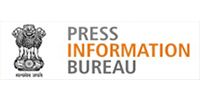Culture
Puducherry people, culture, festivals reflect the social structure of the Union territory. The culture of Puducherry has imbibed various fairs and festivals. Some of these fairs and festivals are religious in nature, while others are cultural and spiritual. Few of the popular fairs and festivals that have religious significance are festival Kinni Radhothsavam in Kamatchiamman Temple, Masi Magam, Brahamothsavam in Manakula Vinayagar Temple, Bastille Day on 14 July, Fire Walking Festival, annual festival at Muthumariamman Temple, 22-day festival in Drowpathiamman Temple and many more.
The International Yoga Festival in January and the Veerampattinam Car Festival are the two famous festivals. Puducherry was the erstwhile colony of France, so the influence of French culture is evident on the architecture, cuisine and lifestyle of the people of Puducherry. The influence of the neighboring states of Andhra Pradesh, Tamil Nadu, and Kerala are also quite evident on their culture. Puducherry is a popular pilgrimage center where people following various religions come here. Religion and spirituality is imbibed in the culture of the region. In and around Puducherry there are more than 350 temples.
The people of Puducherry are engaged in different types of handicrafts like leather, woodcraft, pottery, metal craft etc. It has a cosmopolitan culture and people belonging to different castes, creed and religions live here amicably. Puducherry people, culture, festivals are the representative of the heritage of the Indian sub-continent. U.T. of Puducherry people speak French and English, along with Tamil, Telugu and Malayalam. If you are interested to gather more information on Puducherry people, culture, festivals, click on the following links:
Puducherry People
The Union Territory of Puducherry has a richly cosmopolitan culture. Puducherry people speak French and English, along with Tamil, Telugu and Malayalam. Some of the schools in Puducherry use French as the medium of communication. An interesting fact about the people of Puducherry is that half the population in the region hold dual citizenship of both French and Indian. People of different castes, religions, creed, origin live here happily and enjoy all the festivals together.
The people of Puducherry are easy and happy going. The people celebrate the festivals like Pongal, International Yoga Festival in January, Maasi Magam in the month of March, Maangani Festival in July, Bastille Day on 14 July with great festivity. Puducherry is one of the major educational centers of India and has some renowned institutions like Aarupadai Veedu Medical College, Mahatma Gandhi Medical College and Research Institute, Pondicherry Institute of Medical Sciences and Research Pondicherry Medical, Vinayak Mission's Medical College, Sri Manakula Vinayagar Engineering College, Jawaharlal Institute of Postgraduate Medical Education and Research, Pondicherry Engineering College, Bharathiar College of Engineering and Technology, Sri Rajiv Gandhi Institute of Engineering ans Technology, Dr. Ambedkar Government Law College.
As a result education and learning is very much in the culture of the people who are engaged in education and research. Since Puducherry was influenced by French, the influence of French culture is evident on the architecture, cuisine and lifestyle of the people of Puducherry. Leather, woodcraft, pottery, metalcraft are some of the popular handicrafts in which the people of Puducherry are engaged.
Puducherry Culture
Puducherry Culture is very rich and diverse. It is a place where the cultural impacts of several traditions have merged to form a cultural in itself. The glorious past is reflected well in the cultural practices of the people of the Union Territory of Puducherry. The dominant cultural practices in Puducherry are mainly influenced and inspired by the traditions and customs of the people of the Tamil origin on one hand and the lifestyle of the French colonizers.
The spirit of the Union Territory of Puducherry lies in this unique fusion. The Puducherry people, culture, festivals together contribute to the lively ambiance of the place. Various fairs and festivals form an integral part of the culture of Puducherry. Several aspects of the daily activities and lifestyle of the people are celebrated in these festivals. There are festivals dedicated to food and handicrafts as well. During the colonial period a tradition of practicing art and crafts evolved in this place. Till date many people of Puducherry work to keep this age old tradition alive.
The local people are involved in making various dining mats, candles, incense sticks, wooden serving mats, screen paintings, batik paintings on clothes, etc. On a trip to Puducherry, the French Rivera of the East you will discover how in the two sectors of the place both the French and the Tamil culture are celebrated and maintained with equal enthusiasm. The presence of two dominant influences have made the Puducherry culture complex but very vibrant at the same time.
Music and Dance in Puducherry
Music & Dance in Puducherry form a very important part of the cultural life of the people here. Various dance festivals are celebrated by the people of this union territory of India. Cultural programs are organized during the other festivals as well. The music and dance forms of Puducherry are immensely influenced by the rich heritage of the Tamil tradition. Here the classical form of music of South India are celebrated and kept alive with much enthusiasm. The Puducherry people, culture, festivals all remain incomplete without the lively music and dance performances.
In the dance festivals of Puducherry one will get to watch performances of some of the traditional forms like Yakshgana, Kathak, Kuchipudi, Chau, Mohininattam, etc. on the occasion of Shivaratri the Chidambaram Natyanjali Festival is celebrated here every year. Performers from various corners of the country gather to perform in and attend this prestigious festival. The festival was first initiated by Kapila Vatsayan and Nagaswamy in the year of 1981. The Bhairavi is a Carnatic music circle in Puducherry. They organize performances of Carnatic music every month. It is functioning for the last twenty two years. They arrange for both instrumental as well as vocal performances.
They also organize special programs for the children. There are about two hundred and five members of this music circle of Puducherry. There is also a wing of this organization that is totally dedicated to offering lessons and training in art, sculpture, music and dance to enthusiasts of Puducherry culture. The different forms and genres of music and dance in Puducherry thus are celebrated as an important aspect of community lifestyle and social interaction.
Puducherry Architecture
Puducherry Architecture is one of the most interesting subjects to be noticed and studied about this union territory of India. The architecture here is highly influenced by the culture of the place. An interesting fact about Puducherry is that the city is divided into two quarters. While one is the French sectors the other is the Tamil section. The cityscapes of the two different sectors strongly reflect the lifestyle and practices of the people living in this place.
The architectural styles of the buildings in the two sectors are completely different from each other. There are also some excellent structures in Puducherry that represent the fusion of the two dominant architectural styles of this place. These houses belong to the Franco- Tamil category. In the Tamil section of the city a visitor can notice houses with 'thalvaram' and 'thinnais'. The thalvarams are street verandas with a leaning roof which is supported by wooden posts. Vertical columns and pillars with ornamented parapets are characteristic features of typical Tamil style of houses.
The thinnais are public verandas with masonry seats for guests and visitors. The interiors of the houses in the French quarter are more embellished than the exteriors. French architectural influences are marked by the tall arched windows and door along the with high ceilings. The French houses were generally built with street frontage. The window shades were generally made of wood or light metals. Thus the most interesting parts of the Puducherry architecture are the products of fusion of the two styles. There are some houses in the Tamil streets where the architecture reflect remarkable French influence.
Fairs & Festivals of Puducherry
Fairs and Festivals of Puducherry are reflective of the cultural heritage of the place. A strong connection with Tamil Nadu, a history of French colonialism, and the influence of Rishi Sri Aurobindo together effects to bestow Puducherry with a plethora of festivals. Puducherry literally indulges in various fairs and festivities throughout the year. Some of the festivals are very unique and interesting, celebrated only within Puducherry.
Puducherry has a population that is a harmonious mix of different religions. Thus the fairs and festivals in Puducherry are also centered around their presiding deity though everybody irrespective of caste and creed takes part in them. Lord Sulramaniar, Muthumariammam and Angalamman are mostly worshiped by the Hindus of Puducherry. Similarly, the Christians take part in the feast of Lady of Lourdes and celebrate St Theresa festival. The Muslims also have their mosques and their respective celebrations. The Pongal festival is the most important festival in Puducherry though their are many other celebrations.
Large number of tourists and people from neighboring areas flock Puducherry especially during the International Yoga Festival, Fire Walking festival and Masquerade or Mask festival. All these festivals are celebrated with great enthusiasm by people from all walks of life. Due to Keralite influence in the region of Mahe in Puducherry festivals like Vishu, Onam and Sri Krishna Jayanti are also celebrated with much pomp. Other fairs and festivals of Puducherry include Mangani festival, Mandalam Vilakku, Putha Lanthira, Kandoori festival, Mandolilthira, Sedal, Pandokuloththira, Bhagavathi temple festival, Koyodan Korothithra, Masimagam Festival, Vishnutheertham and Swamikalyanam.























